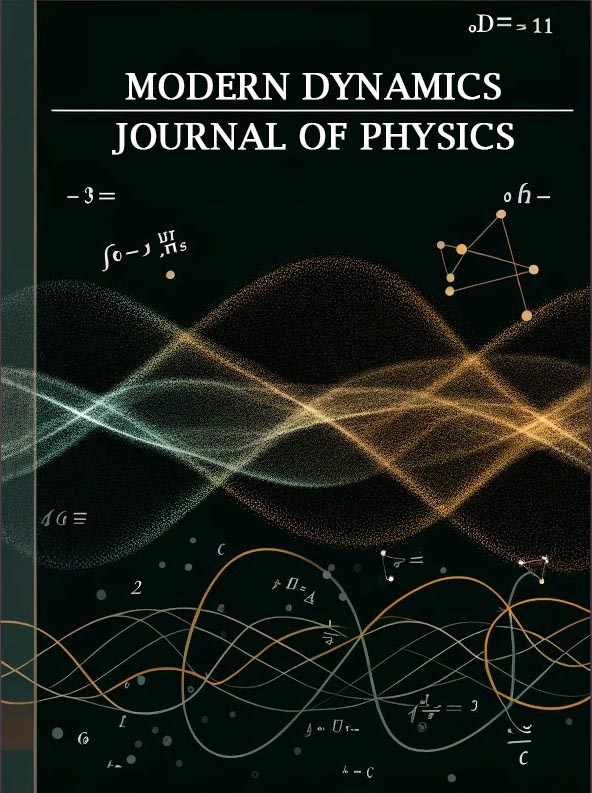Investigating the Physics of Black Holes and Their Role in Cosmology
DOI:
https://doi.org/10.36676/mdjp.v1.i2.6Keywords:
Physics, Black Holes, Cosmology, GravityAbstract
Black holes are among the most mysterious and compelling objects in the universe, playing a significant role in advancing our understanding of fundamental physics and cosmology. This paper delves into the physics of black holes, exploring their formation, types, and the theoretical frameworks of general relativity and quantum mechanics that describe them. Observational techniques, including X-ray binaries, gravitational wave detection, and the Event Horizon Telescope, have provided compelling evidence of their existence and properties. Furthermore, black holes are pivotal in galaxy formation and evolution, influencing star formation and galactic dynamics through feedback mechanisms. Their potential connection to dark matter and the ongoing quest to resolve the black hole information paradox highlight their importance in theoretical physics, driving advancements in quantum gravity and our understanding of the universe. This research underscores the profound implications of black holes in both observational cosmology and theoretical physics, marking them as critical subjects of study in the quest to unravel the mysteries of the cosmos.
References
Abbott, B. P., Abbott, R., Abbott, T. D., Abernathy, M. R., Acernese, F., Ackley, K., ... & Zweizig, J. (2016). Observation of gravitational waves from a binary black hole merger. Physical Review Letters, 116(6), 061102. https://doi.org/10.1103/PhysRevLett.116.061102
Begelman, M. C., & Rees, M. J. (1978). The fate of dense stellar systems. Monthly Notices of the Royal Astronomical Society, 185(4), 847-860. https://doi.org/10.1093/mnras/185.4.847
Event Horizon Telescope Collaboration, Akiyama, K., Alberdi, A., Alef, W., Asada, K., Azulay, R., ... & Zhao, G. Y. (2019). First M87 Event Horizon Telescope results. I. The shadow of the supermassive black hole. The Astrophysical Journal Letters, 875(1), L1. https://doi.org/10.3847/2041-8213/ab0ec7
Hawking, S. W. (1974). Black hole explosions? Nature, 248(5443), 30-31. https://doi.org/10.1038/248030a0
Khanna, P. (2024). Advancements in Laser Technology: From Precision Metrology to Quantum Optics Experiments. Modern Dynamics Journal of Physics, 1(1), 20–25. https://doi.org/10.36676/mdjp.v1.i1.4
Kormendy, J., & Richstone, D. (1995). Inward bound—The search for supermassive black holes in galactic nuclei. Annual Review of Astronomy and Astrophysics, 33(1), 581-624. https://doi.org/10.1146/annurev.aa.33.090195.003053
Macchetto, F., Marconi, A., Axon, D. J., Capetti, A., Sparks, W., & Crane, P. (1997). The supermassive black hole of M87 and the kinematics of its associated gaseous disk. The Astrophysical Journal, 489(2), 579-600. https://doi.org/10.1086/304823
Merritt, D., & Ferrarese, L. (2001). The M•–σ relation for supermassive black holes. The Astrophysical Journal, 547(1), 140-145. https://doi.org/10.1086/318372
Mrs. Monika. (2023). Black Holes and Information Paradox: Resolving the Hawking Paradox. Innovative Research Thoughts, 9(1), 336–342. Retrieved from https://irt.shodhsagar.com/index.php/j/article/view/617
Patel, R. (2024). Advancements in Superconductivity: From High-Temperature Materials to Applications in Energy Storage. Modern Dynamics Journal of Physics, 1(1), 8–13. https://doi.org/10.36676/mdjp.v1.i1.2
Rees, M. J. (1984). Black hole models for active galactic nuclei. Annual Review of Astronomy and Astrophysics, 22(1), 471-506. https://doi.org/10.1146/annurev.aa.22.090184.002351
Singh Lather, A. (2017). MANY-BODY PHYSICS. Innovative Research Thoughts, 3(9), 75–78. Retrieved from https://irt.shodhsagar.com/index.php/j/article/view/227
Volonteri, M. (2010). Formation of supermassive black holes. The Astronomy and Astrophysics Review, 18(3), 279-315. https://doi.org/10.1007/s00159-010-0029-x
Vikas, & Priyanka. (2016). Study of Contribution of Albert Einstein to Physics. International Journal for Research Publication and Seminar, 7(5), 35–38. Retrieved from https://jrps.shodhsagar.com/index.php/j/article/view/863
Zwicky, F. (1933). Die Rotverschiebung von extragalactic Nebeln. Helvetica Physica Acta, 6, 110-127.
Downloads
Published
How to Cite
Issue
Section
License
Copyright (c) 2024 Modern Dynamics Journal of Physics

This work is licensed under a Creative Commons Attribution-NonCommercial 4.0 International License.
This license requires that re-users give credit to the creator. It allows re-users to distribute, remix, adapt, and build upon the material in any medium or format, for noncommercial purposes only.
